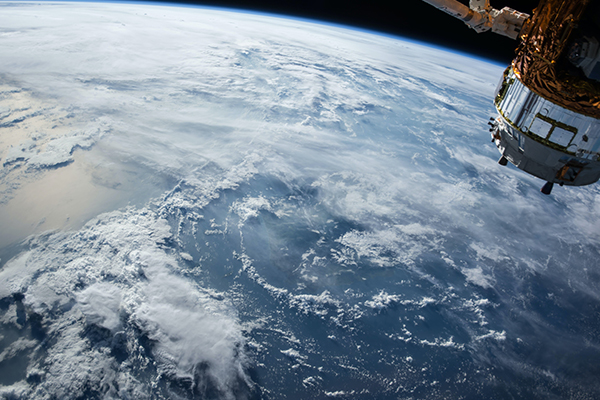Super-earth is a unique category among all exoplanets. Among all exoplanets, they are the ones that resemble earth the most in terms of physical parameters and environmental conditions. The search and studies of this unique category of exoplanets is naturally of immense scientific and utilitarian values. The study of super-earths has huge potential in pointing out the future directions for the entire human species. Meanwhile, the search is also extremely difficult due to the rarity of observable super-earths in outer space.
In the hunting for super-earth exoplanets, scientists have made yet another milestone discovery with the determination of the transits of HD 97658b. Essentially, the hunt for super-earth exoplanets is to find earth-like planets which are much larger in size, that orbit around distant stars. It is usually extremely difficult for them to be observed and captured by telescopes, due to the high requirements of observation. This makes the pinning down of HD 97658b a significant discovery for future explorations.
In determining the transit period, the radius, mass, and density of the super-earth, multiple sets of radial velocity (RV) measurements have been involved. For HD 97658b, a total of 171 RVs have been used to determine the physical features of the exoplanet.
The MOST photometry played the key role in the discovery, serving as the eyes of the astronomers. The observation of HD 97658b was not continuous, as it was limited by the Continuous Viewing Zone (CVZ) of the satellite. The observation was only carried out when HD 97658b entered the CVZ of MOST, and it took two phases of observations in 2012 and 2013 to collect the adequate data for analysis.
The transit-like event performed by the exoplanet was determined by the periodic occurring in the light curves recorded. The period was roughly determined to be around 9.49 days.
The mathematic modeling of the data is more complicated, requiring the EXOFAST algorithm to integrate the RVs and photometry of HD 97658b at the same time. A proper incorporation of uncertainties is also crucial in deriving the final results. In the case of HD 97658b, an underestimation of uncertainties in effective temperature and metallicity has been observed and corrected.
Moreover, a defect with the MOST satellite system has also been included in the consideration and calculation. It is estimated that a 10% suppression in transit signal depths corresponds to a 5% error in planet radius calculation. Therefore, the suppression of transit signal depth has also been corrected in the calculation.
In the calculation of the size of HD 97658b, it has been found that the uncertainties in the size of the star it orbits around has a much more significant influence on the results, than the photometric uncertainties. In other words, stellar radius is the key factor in determining the planet size precision.
The discovery of HD 97658b is rare because its transit intercepts with the disk of its host star. Meanwhile, its host start is also bright enough to facilitate the degree of precision required. These two conditions make it possible for people to measure the size and density of HD 97658b.
Through a series of mathematical modeling and incorporation of uncertainties, the radius of HD 97658b is determined to be 2.34+0.18-0.15R⊕. The density of HD 97658b is 3.44+0.91-0.82 gcm-3. These values indicate a not entirely rocky planet that is very likely to be surrounded with an atmosphere composed of lighter elements, possibly in the form of volatiles.
It is incredible how observations from such a distance can reveal so much about an exoplanet. The possibility of volatiles may point to the existence of organic matters, or even life forms. Comparing HD 97658b to another discovered exoplanet, Kepler-68b, a significant feature of HD 97658b has been found. It is much less irradiated than Kepler-68b. This means that existence of light elements such as hydrogen and helium has a very high chance.
Among all the super-earth exoplanets discovered so far, HD 97658b is a unique presence with a mid-level orbital period and a visual magnitude that ranks among the top. It is the second super-earth that has been found to orbit a very bright star with a visual magnitude of as high as 7.7. The potential existence of water on the planet, combined with the extremely favorable visual conditions, make HD 97658b an ideal subject in the studies and discovery of super-earths.
The discovery of HD 97658b also adds an important frame of reference to the study and comparison of super-earths with different temperatures. As mentioned above, the different degree of irradiation between HD 97658b and Kepler-68b can be further studied to compare the influences on the other physical features of the two exoplanets. Since temperature is of crucial importance for the survival and inhabitance of living things, further determination of the physical characteristics of HD 97658b is more than necessary.
Having settled on both the value of studies and the highly executable nature due to its visibility, the investment of more observation time on HD 97658b has been justified. the James Webb Space Telescope is found to be a potential assistive force in the future observation of HD 97658b.
Through the continuous observation of HD 97658b, accompanied with the new discoveries of exoplanets and especially super-earths, the final aim of astronomers is to establish a much larger database of exoplanets, each with a basic profile of its size, radius, density, etc. While a single discovery may not mean much for the study of super-earth on the whole, a database is going to provide a much clearer big picture of super-earth studies.
According to the scientists who carried out the search for HD 97658b: “it is worthwhile to continue the RV monitoring of the HD 97658 system in order to search for additional planetary companions.”

